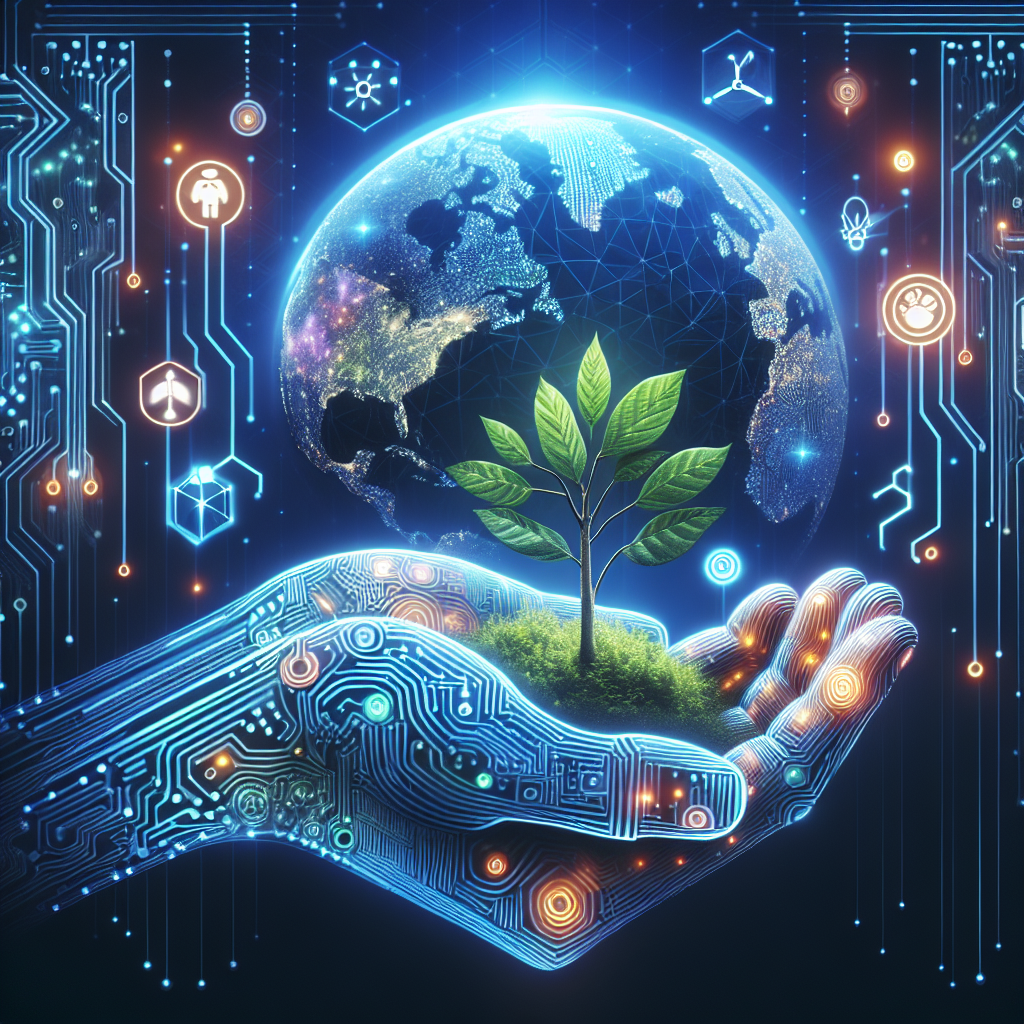Artificial Intelligence (AI) is revolutionizing many industries, and environmental conservation is no exception. With the increasing threat of climate change and biodiversity loss, AI is being harnessed to help protect and preserve the environment in ways that were previously unimaginable. From monitoring ecosystems to predicting natural disasters, AI is transforming the way we approach conservation efforts and helping to create a more sustainable future for our planet.
One of the key ways in which AI is being used in environmental conservation is through the monitoring of ecosystems and wildlife. Traditional methods of monitoring wildlife populations, such as camera traps and satellite imagery, are often time-consuming and labor-intensive. AI technology, on the other hand, can analyze vast amounts of data in a fraction of the time, allowing researchers to track the movements of animals and monitor changes in their populations more efficiently.
For example, researchers at the University of Washington have developed an AI system that can analyze thousands of hours of underwater video footage to track the movements of fish populations. This technology is helping scientists to better understand the impact of human activities on marine ecosystems and to develop more effective conservation strategies.
AI is also being used to track and combat illegal poaching and deforestation. By analyzing satellite imagery and sensor data, AI algorithms can detect illegal logging activities and alert authorities in real-time. Similarly, AI-powered drones are being used to patrol protected areas and monitor wildlife populations, helping to deter poachers and protect endangered species.
In addition to monitoring ecosystems and wildlife, AI is also being used to predict and mitigate the impact of natural disasters. By analyzing historical data and real-time weather patterns, AI algorithms can predict when and where natural disasters such as floods, wildfires, and hurricanes are likely to occur. This information can help authorities to evacuate at-risk populations, allocate resources more effectively, and reduce the overall impact of these disasters on the environment.
Furthermore, AI can also be used to optimize resource management and energy efficiency. By analyzing data on energy consumption and carbon emissions, AI algorithms can help businesses and governments to identify opportunities for reducing their environmental footprint. For example, AI-powered smart grids can optimize energy distribution and reduce wastage, while AI-powered transportation systems can help to reduce traffic congestion and air pollution.
Overall, the potential applications of AI in environmental conservation are vast and diverse. By harnessing the power of AI technology, we can better understand and protect the natural world, mitigate the impact of climate change, and create a more sustainable future for generations to come.
FAQs:
Q: How is AI being used to monitor wildlife populations?
A: AI technology can analyze vast amounts of data from sources such as camera traps and satellite imagery to track the movements of animals and monitor changes in their populations more efficiently.
Q: How is AI being used to combat illegal poaching and deforestation?
A: AI algorithms can analyze satellite imagery and sensor data to detect illegal logging activities and alert authorities in real-time. AI-powered drones are also being used to patrol protected areas and monitor wildlife populations.
Q: How is AI being used to predict and mitigate natural disasters?
A: By analyzing historical data and real-time weather patterns, AI algorithms can predict when and where natural disasters are likely to occur, helping authorities to evacuate at-risk populations and reduce the overall impact of these disasters.
Q: How is AI being used to optimize resource management and energy efficiency?
A: AI algorithms can analyze data on energy consumption and carbon emissions to help businesses and governments identify opportunities for reducing their environmental footprint. AI-powered smart grids and transportation systems can also help to optimize resource management and reduce wastage.
In conclusion, AI is revolutionizing environmental conservation in ways that were previously unimaginable. From monitoring ecosystems and wildlife to predicting and mitigating natural disasters, AI technology is helping to protect and preserve the environment and create a more sustainable future for our planet. By harnessing the power of AI, we can better understand and protect the natural world, mitigate the impact of climate change, and ensure a healthy planet for generations to come.

